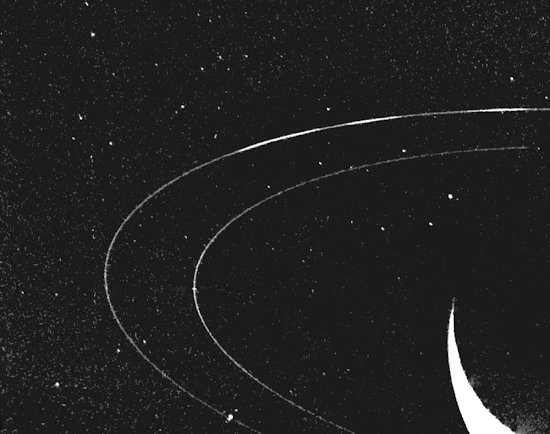Secretive 'hot Jupiter' planets can frame rapidly or gradually, Gaia space apparatus uncovers
The presence of "hot Jupiters" is one of the most seasoned secrets of the exoplanet-hunting time, yet a European rocket is uncovering a few pieces of information about how these cryptic universes structure.
Purported blistering Jupiters are planets that are generally basically as monstrous as Jupiter and circle exceptionally near their stars, normally short of what one-10th the distance at which Earth circles the sun. Hot Jupiters are altogether different from anything found in the planetary group, suggesting conversation starters about their arrangement.
Presently, new information from the European Space Agency's Gaia space apparatus, which is following in excess of a billion stars in the Milky Way, has given new knowledge into the development, development, and relative period of hot Jupiters.
Analysts utilized Gaia's estimations of items' positions and speeds to decide the overall period of stars. Joining this data with information on the arrangement of hot Jupiters to their stars' turn uncovered that there are various manners by which hot Jupiters structure — both quick and slow.
"Without this truly exact technique for estimating ages, there was continuously missing data," Jacob Hamer, a doctoral understudy in the Johns Hopkins University Department of Physics and Astronomy and lead creator of another paper portraying the discoveries, said in an explanation.
Hot Jupiters with circles skewed from the equators of their stars are remembered to shape late compared with those that are adjusted, similar to the planets in our sun-powered
"One [formation process] happens rapidly and produces adjusted frameworks, and [the other] happens over longer timescales and produces skewed frameworks," Hamer said in the proclamation.
The work has been acknowledged for distribution in The Astronomical Journal, and a preprint variant is accessible through the arXiv data set.
How are other planets’ rings created?
Our Solar System is host to a few other extraordinary ring types. Jupiter's weak ring framework is made altogether of residue particles flung up into space by micrometeorites affecting the planet's little internal moons. Saturn's weak and diffuse Phoebe ring is likewise shaped by particles catapulted from the namesake moon. Neptune's peripheral ring isn't so much as a ring however five unmistakable circular segments, whose particles are presumably held back from fanning out because of the gravitational draw of the ring moon Galatea.
A few rings are strange. For instance, two of the furthest Uranian rings are red and blue, showing a creation, not at all like that of the planet's inward, dim rings as well as that of the Saturnian set. The biggest Uranus ring, epsilon, is tens to many times smaller than those of Saturn, and we don't have the foggiest idea why.
In 2014, space experts found a planet outside our Solar System that seems to have rings multiple times more extensive than Saturn's! At 180 million kilometers (112 million miles) across, the rings of this "Super Saturn" — formally named J1407b — range more extensive than the Sun-Earth distance of 150 million kilometers (around 93 million miles). On the furthest edge of the size range, there are the two rings of 10199 Chariklo, an around 200-kilometer-sized (around 124-mile-sized) object circling our Sun among Saturn and Uranus. How do these giant and little rings frame? We're yet to find out!
Future exploration of our Solar System’s rings
The solutions to why the goliath planets Jupiter, Uranus, and Neptune don't have as magnificent a bunch of rings as Saturn, to some extent in the present, eventually lie in getting a handle on how rings structure, develop, and at times, vanish. Sending a space apparatus to exhume lumps from Saturn's rings and measure their definite creation, and in a perfect world, in any event, carry tests to Earth, would secure the age and beginning of Saturn's rings.
Similarly, sorting out how Phobos is framed would let researchers know if it truly is important for a continuous ring-moon cycle on Mars. While no mission is being intended to concentrate on Saturn's rings, Japan's Martian Moons eXploration mission, or MMX, will concentrate on Phobos and carry tests from it to Earth to assist researchers with learning its age and arrangement.
The 2023-2032 Planetary Science Decadal Survey — a report created at regular intervals by the U.S. academic local area to direct future NASA missions — prescribes sending a shuttle to Uranus as the most elevated need. One of the four significant logical targets of this Uranus Orbiter and Probe (UOP) mission is to grasp the synthesis, beginning, mechanics, and history of the planet's rings. Meanwhile, the as of late sent off JWST space telescope will notice rings of the multitude of monster planets to detect beforehand obscure elements and assist scientists with better checking how they advance.
The grand rings of Saturn will disappear over the long run, losing pieces and pieces to the planet meanwhile obscuring like soil on our Moon. All things being equal, Saturn's small frosty moon Enceladus will in any case be emitting water tufts into space to keep the planet's diffuse E-ring alive.




